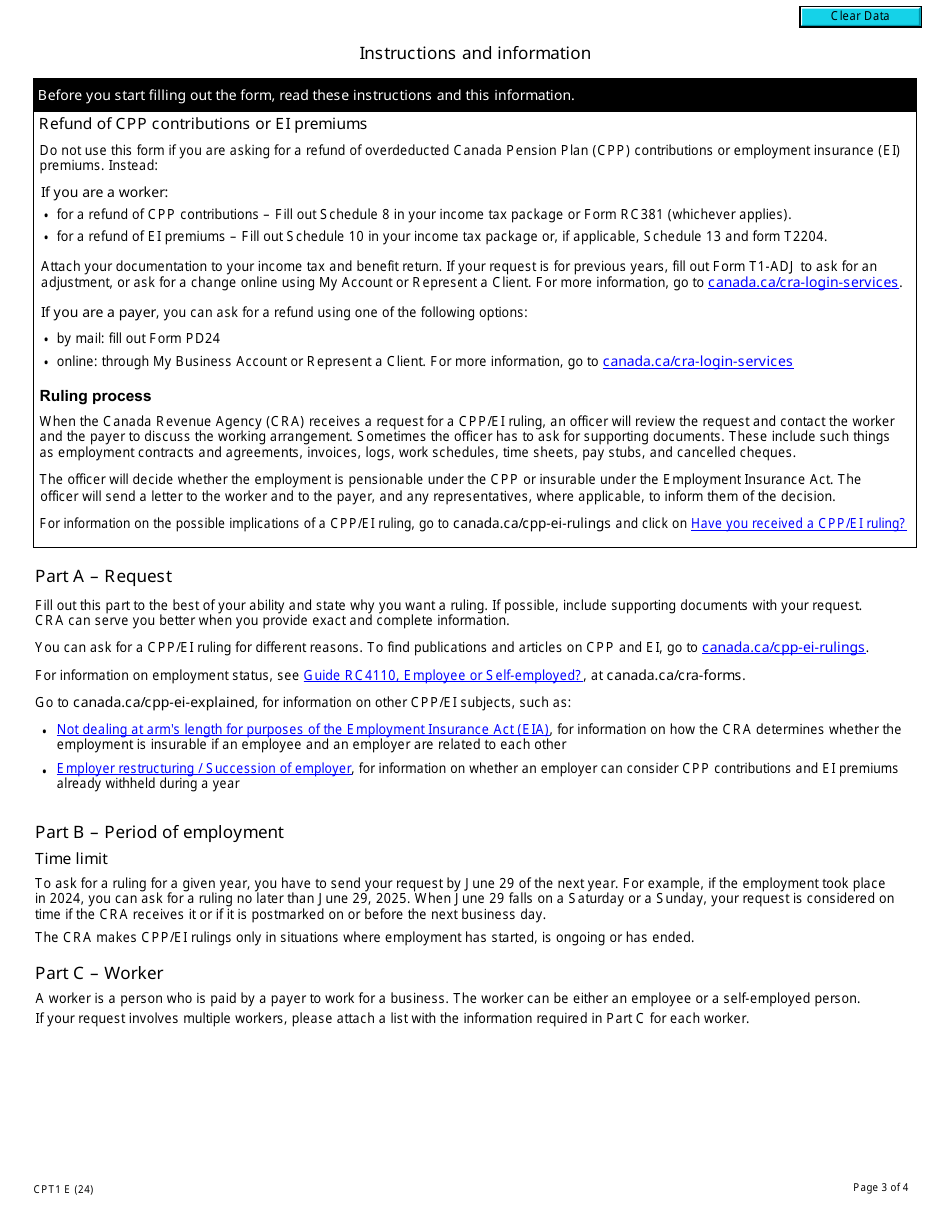Form CPT1 Request for a Cpp / Ei Ruling - Employee or Self-employed - Canada
Form CPT1 Request for a Cpp/Ei Ruling in Canada is used to request a ruling on whether an individual is considered an employee or self-employed for the purposes of the Canada Pension Plan (CPP) and Employment Insurance (EI) contributions. This form helps determine the individual's entitlement to benefits and the employer's obligations under these programs.
The Form CPT1 Request for a CPP/EI Ruling is typically filed by the employer, not the employee or self-employed individual.
Form CPT1 Request for a Cpp/Ei Ruling - Employee or Self-employed - Canada - Frequently Asked Questions (FAQ)
Q: What is a CPT1 Request?
A: A CPT1 Request is a form used in Canada to request a ruling on whether an individual should be classified as an employee or self-employed for the purposes of the Canada Pension Plan (CPP) and Employment Insurance (EI).
Q: Why would I need to submit a CPT1 Request?
A: You would need to submit a CPT1 Request if you are unsure about your employment status and want to receive a ruling from the Canada Revenue Agency (CRA) to determine whether you should be classified as an employee or self-employed.
Q: What is the purpose of the CPP?
A: The Canada Pension Plan (CPP) is a contributory, earnings-related social insurance program that provides retirement, disability, and survivor benefits to eligible individuals.
Q: What is the purpose of EI?
A: Employment Insurance (EI) is a program that provides temporary financial assistance to unemployed workers who have lost their job through no fault of their own.
Q: What are the differences between being classified as an employee or self-employed?
A: Being classified as an employee means that an employer is responsible for deducting and remitting CPP contributions and EI premiums on your behalf. Being classified as self-employed means that you are responsible for paying both the employer and employee portions of CPP contributions and EI premiums.
Q: How do I fill out the CPT1 Request form?
A: You will need to provide your personal information, details about your work arrangement, and answer a series of questions relating to your relationship with the organization you work for.
Q: What happens after I submit the CPT1 Request form?
A: After you submit the CPT1 Request form, the CRA will review your information and provide you with a ruling on your employment status. This ruling will determine whether you should be classified as an employee or self-employed for CPP and EI purposes.
Q: Can I appeal the ruling provided by the CRA?
A: Yes, if you disagree with the ruling provided by the CRA, you have the right to appeal the decision and provide additional supporting documentation to support your case.








